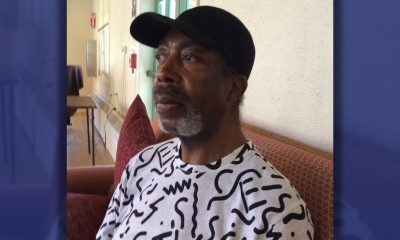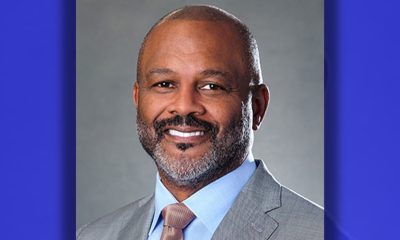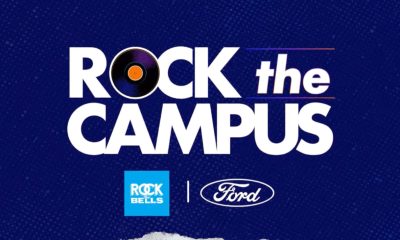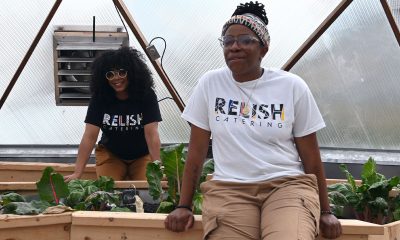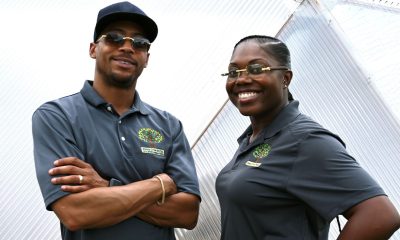Business
Carmakers Finish Strong in 2014; Are Even Better Days Ahead?

Dodge Ram pickup trucks are on display on the lot at Landmark Dodge Chrysler Jeep RAM Monday, Jan. 5, 2015, in Morrow, Ga. Buoyed by a resurgent economy, holiday sales, cheap gasoline and a love affair with pickup trucks, Americans headed to car dealers in droves last month, pushing full-year sales to what’s likely to be the highest level since 2006. (AP Photo/John Bazemore)
TOM KRISHER, AP Auto Writers
DEE-ANN DURBIN, AP Auto Writers
DETROIT (AP) — Confident in the economy and cheered by cheap gas, Americans are likely to push new car sales to their highest level in a decade this year.
Analysts expect sales to reach 17 million for the first time since 2005. That’s close to the record of 17.3 million set in 2000.
Low gas prices are giving buyers more confidence, whether they’re buying their first subcompact or upgrading to a larger SUV. Gas prices started this year at an average of $2.23 per gallon, down 33 percent from the beginning of 2014, according to AAA. The Energy Department estimates that lower gasoline prices will save U.S. households $550 this year — about four months of lease payments on a 2014 Honda Civic.
Popular new vehicles, like the Jeep Cherokee and Subaru Outback, are also drawing buyers.
Sales have now grown for five consecutive years — a rarity in the volatile auto industry.
While sales are growing, the pace has slowed from double-digit increases in 2011 and 2012. That’s good news for buyers, who can expect to see bigger discounts in competitive segments like midsize cars as automakers fight to steal sales from each other.
Alec Gutierrez, an analyst with the car buying site Kelley Blue Book, thinks sales could stay in the 17-million range for the next two or three years if interest rates stay low and the U.S. economy remains healthy.
December, with its holiday discounts and warmer-than-usual weather, brought buyers out in droves, with sales up 11 percent over the previous year. Automakers reported December and full-year sales Monday.
For all of 2014, sales were up 6 percent to 16.5 million vehicles, according to Autodata Corp. That was the biggest year for the industry since 2006.
Back then — as now — the Ford F-Series was the country’s best-selling vehicle and the midsize Toyota Camry was the best-selling car. The top-selling SUV was the Ford Explorer, but it was only No. 14 among all vehicles sold, according to Ward’s AutoInfoBank. In 2014 two smaller SUVs — the Honda CR-V and the Ford Escape — cracked the top 10 in sales as customers turned away from small and midsize cars as car-like handling and low gas prices made such vehicles more appealing.
Toyota, Fiat Chrysler and General Motors all reported 2014 sales increases, and Nissan, Subaru, Hyundai and Honda reported record numbers for the year.
Ford’s sales were flat, but the Ford brand remained the top-selling brand in the U.S. Among major automakers, only Volkswagen’s sales fell.
Here are more details about 2014 and trends to watch for this year:
BEST-SELLERS: General Motors — with its Buick, Chevrolet, Cadillac and GMC brands — sold the most vehicles in the U.S. in 2014 despite a scandal over the delayed recall of faulty ignition switches in older small cars. GM sold just over 2.9 million vehicles, up 5 percent from 2013.
— WINNERS AND LOSERS: Among major automakers, Subaru was the biggest gainer, with sales up 21 percent to 513,693 vehicles in 2014. Subaru’s three new utilities — the Crosstrek, Forester and Outback — drove sales. FiatChrysler was the year’s other big gainer, with sales up 16 percent to 2 million, thanks to strong demand for its Jeep and Ram brands. Volkswagen had a difficult year, as sales fell 10 percent while the German automaker waited for new vehicles to hit U.S. showrooms. Mini also struggled as gas prices fell, with sales down nearly 20 percent.
— SUV BOOM: Gas prices accelerated the switch from cars to SUVs. Light trucks, the category that includes SUVs, outsold cars in 2014 — the first time that’s happened since 2011, according to car shopping site Edmunds.com. That’s partly because automakers are offering more types of SUVs, including fuel-efficient subcompacts such as the Buick Encore, to appeal to young families and Baby Boomers. The trend is likely to continue in 2015 as more small SUVs, like the Honda HR-V, Jeep Renegade and Mazda CX-3, hit the market.
— LUXURY GROWTH: As the stock market rose, so did sales of expensive vehicles. BMW, Audi, Porsche and Land Rover all reported record U.S. sales in 2014. Lexus luxury sales outpaced mass-market sales last year, and they’re expected to do so again this year. Luxury makers are offering more models, like the new Maserati Ghibli sedan and Lincoln MKC SUV, and they’re expanding their customer base with lower-priced models like the Mercedes GLK-Class and Jaguar XE due out this year. Mercedes-Benz was expected to be the top-selling luxury brand in the U.S. for 2014.
— PICKUP WARS: Ford’s F-Series, the best-selling truck in the U.S. for 38 years, saw sales drop in 2014 as the company temporarily halted production to prepare for its new aluminum-sided F-150. The new truck arrived at dealerships in December, but inventory won’t be at normal levels until the middle of 2015. In the meantime, rivals are offering big deals to lure customers away. Ram truck sales rose 24 percent in 2014, while Silverado sales gained 10 percent.
Copyright 2015 The Associated Press. All rights reserved. This material may not be published, broadcast, rewritten or redistributed.
Bay Area
Mayor Breed Proposes Waiving City Fees for Night Markets, Block Parties, Farmers’ Markets, Other Outdoor Community Events
Mayor London N. Breed introduced legislation on April 26 to encourage and expand outdoor community events. The first will waive City fees for certain events, making them less costly to produce. The second will simplify the health permitting for special event food vendors through the creation of an annual permit. Both pieces of legislation are part of the Mayor’s broader initiative to bring vibrancy and entertainment to San Francisco’s public right of ways and spaces.

Mayor’s Press Office
Mayor London N. Breed introduced legislation on April 26 to encourage and expand outdoor community events.
The first will waive City fees for certain events, making them less costly to produce. The second will simplify the health permitting for special event food vendors through the creation of an annual permit. Both pieces of legislation are part of the Mayor’s broader initiative to bring vibrancy and entertainment to San Francisco’s public right of ways and spaces.
Outdoor community events are integral to San Francisco’s vibrant culture and sense of community. These events include night markets, neighborhood block parties and farmers markets, and bolster the City’s economy by supporting local businesses and attracting tourists eager to experience San Francisco’s unique charm and food scene.
They offer residents, workers and visitors, opportunities to engage with local artists, musicians, and food vendors while enjoying the San Francisco’s stunning outdoor spaces and commercial corridors.
The legislation will allow for more and new community gatherings and for local food vendors to benefit from the City’s revitalization.
“San Francisco is alive when our streets are filled with festivals, markets, and community events,” said Breed. “As a city we can cut fees and streamline rules so our communities can bring joy and excitement into our streets and help revitalize San Francisco.”
Fee Waiver Legislation
The events that can take advantage of the new fee waivers are those that are free and open to the public, occupy three or fewer city blocks, take place between 8 a.m. and 10 p.m., and have the appropriate permitting from the ISCOTT and the Entertainment Commission.
The applicant must be a San Francisco based non-profit, small business, Community Benefit District, Business Improvement District, or a neighborhood or merchant association. Fees eligible for waiver include any application, permit, and inspection/staffing fees from San Francisco Municipal Transportation Agency, Department of Public Health, Fire Department, Entertainment Commission, and Police Department.
Currently, it can cost roughly anywhere between $500-$10,000 to obtain permits for organized events or fairs, depending on its size and scope. Organizations and businesses are limited to a maximum of 12 events in one calendar year for which they can receive these fee waivers.
Food Vendor Streamlining Legislation
The second piece of legislation introduced will help special event food vendors easily participate in multiple events throughout the year with a new, cost-effective annual food permit. Food vendors who participate in multiple events at multiple locations throughout the year will no longer need to obtain a separate permit for each event. Instead, special event food vendors will be able to apply and pay for a single annual permit all at once.
“Many successful food businesses either begin as pop-up vendors or participate in special events to grow their business,” says Katy Tang, Director of the Office of Small Business. “Giving them the option for an annual special event food permit saves them time and money.”
Currently, food vendors are required to get a Temporary Food Facility (TFF) permit from the Department of Public Health (DPH) in order to participate in a special event, among permits from other departments.
Currently, each special event requires a new permit from DPH ranging from $124-$244, depending on the type of food being prepared and sold. Last year, DPH issued over 1,500 individual TFF permits. With the new annual permit, food vendors selling at more than four to six events each year will benefit from hundreds of dollars in savings and time saved from fewer bureaucratic processes.
“This legislation is a step in the right direction to make it easier for food vendors like me to participate in citywide events,” said Dontaye Ball, owner of Gumbo Social. “It saves on time, money and makes it more effective. It also creates a level of equity.”
Bay Area
Faces Around the Bay: Sidney Carey
Sidney Carey was born in Dallas, Texas. He moved with his family to West Oakland as a baby. His sister is deceased; one brother lives in Oakland. Carey was the Choir Director at Trinity Missionary Baptist Church for 18 years.
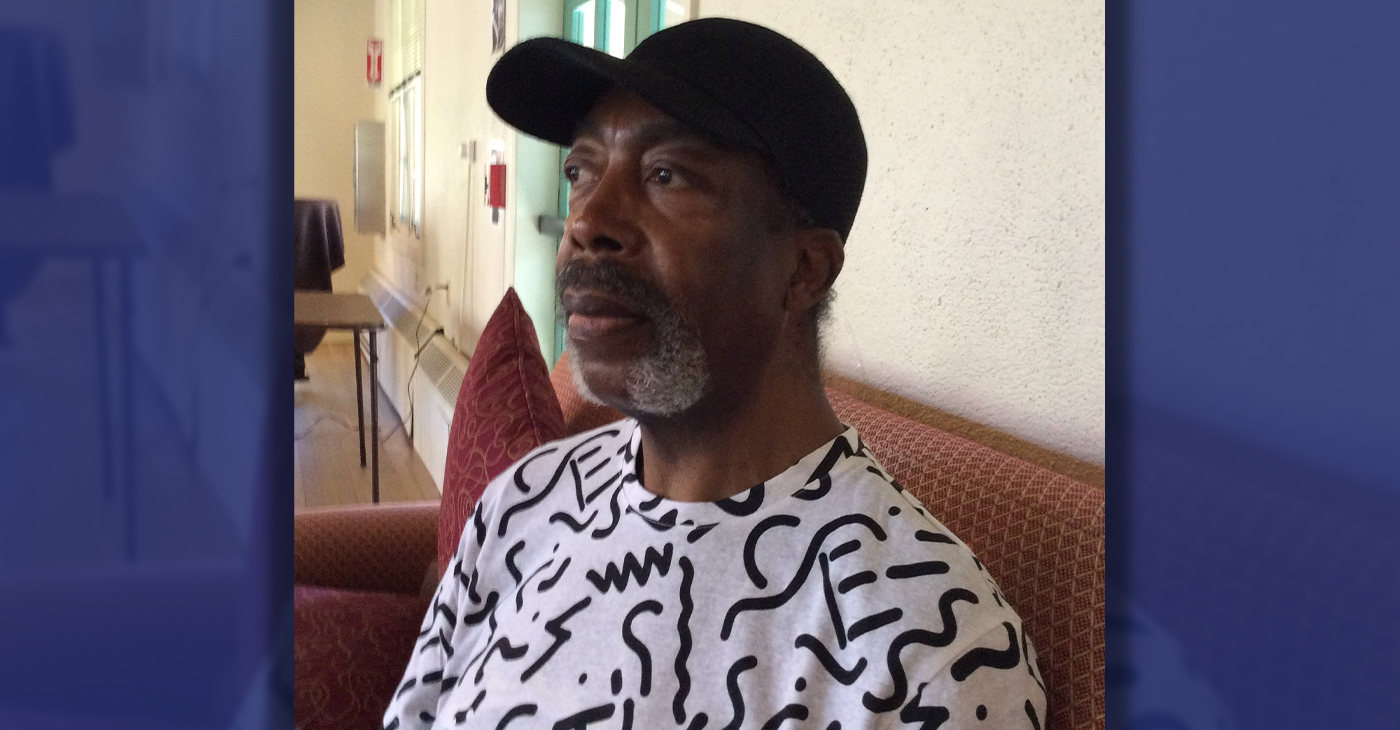
By Barbara Fluhrer
Sidney Carey was born in Dallas, Texas. He moved with his family to West Oakland as a baby. His sister is deceased; one brother lives in Oakland.
Carey was the Choir Director at Trinity Missionary Baptist Church for 18 years.
He graduated from McClymonds High with a scholarship in cosmetology and was the first African American to complete a nine-month course at the first Black Beauty School in Oakland: Charm Beauty College.
He earned his License, and then attended U.C., earning a secondary teaching credential. With his Instructors License, he went on to teach at Laney College, San Mateo College, Skyline and Universal Beauty College in Pinole, among others.
Carey was the first African American hair stylist at Joseph and I. Magnin department store in Oakland and in San Francisco, where he managed the hair stylist department, Shear Heaven.
In 2009, he quit teaching and was diagnosed with Congestive Heart Failure. He was 60 and “too old for a heart transplant”. His doctors at California Pacific Medical Center (CPMC) went to court and fought successfully for his right to receive a transplant. One day, he received a call from CPMC, “Be here in one hour.” He underwent a transplant with a heart from a 25-year- old man in Vienna, Austria
Two years later, Carey resumed teaching at Laney College, finally retiring in 2012.
Now, he’s slowed down and comfortable in a Senior Residence in Berkeley, but still manages to fit his 6/4” frame in his 2002 Toyota and drive to family gatherings in Oakland and San Leandro and an occasional Four Seasons Arts concert.
He does his own shopping and cooking and uses Para Transit to keep constant doctor appointments while keeping up with anti-rejection meds. He often travels with doctors as a model of a successful heart-transplant plant recipient: 14 years.
Carey says, “I’m blessed” and, to the youth, “Don’t give up on your dreams!”
Business
Maximizing Your Bank Branch Experience
In a world of online tools that let you make banking transactions with the touch of a button, the idea of visiting a branch might seem unnecessary. However, if you haven’t visited your local branch recently, you might be surprised by what it has to offer. Your branch is much more than a place to deposit and withdraw money – it can offer the opportunity to build valuable relationships with people who can help you achieve financial independence.
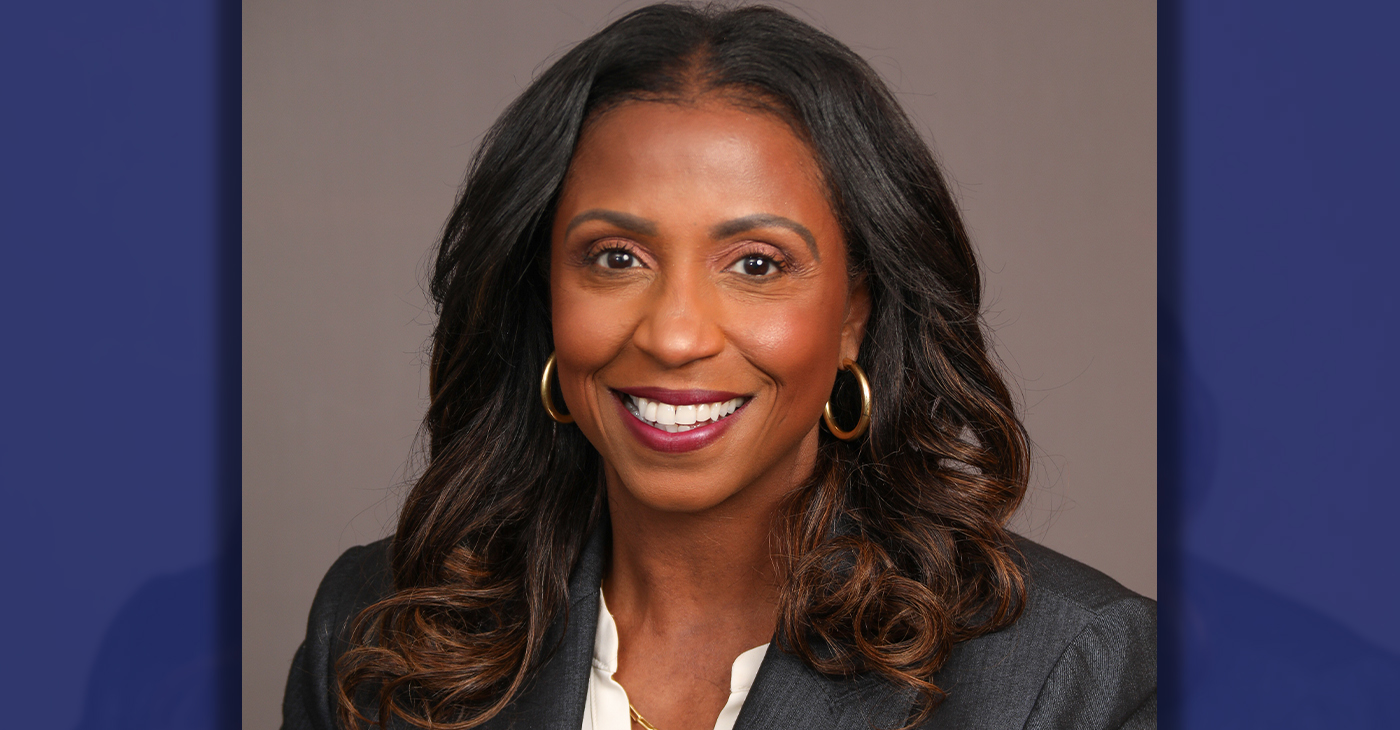
Sponsored by JPMorgan Chase & Co.
In a world of online tools that let you make banking transactions with the touch of a button, the idea of visiting a branch might seem unnecessary.
However, if you haven’t visited your local branch recently, you might be surprised by what it has to offer. Your branch is much more than a place to deposit and withdraw money – it can offer the opportunity to build valuable relationships with people who can help you achieve financial independence.
Diedra Porché, Head of Community and Business Development at Chase, talks about how the bank model has evolved to maximize the branch experience for customers; how connecting with your local branch team can help you think differently about money and investing for your future.
How can a customer feel connected to a bank branch?
I love that question because we ask ourselves the same thing every day. Being part of the community means meeting with local leaders to find out what they need from us and then designing our branches around that. For example, at some of our community branches we have what we call a living room where we can host financial workshops, small business pop-up shops or nonprofit organization meetings. We also hire locally. You feel much more connected talking about financial aspirations with people from your community who went to the same high school, place of worship or maybe frequented the same recreation center down the street when they grew up.
How can I build a relationship with my bank?
Customers should feel comfortable sharing their goals, needs and wants with their banker. Also, it helps to remember the Community Manager is there to help solve your finance challenges and build a roadmap for success. You might have a short-term or long-term goal to open a business, build your credit, become debt-free, buy a home, or save for retirement, and our community team can help. At Chase, we strive to make dreams possible for everyone, everywhere, every day. Your financial future starts with building those relationships.
How can customers change negative perceptions they have about managing their money?
Far too often, customers are intimidated when they visit a bank. Our goal is to demystify banking and money myths empowering people to make the right decisions. For example, a big myth is assuming you need a lot of money to have a bank account. You don’t! Another myth is you need to carry a balance on your credit card to build credit — actively using your credit card can demonstrate that you can use credit responsibly but carrying a balance won’t necessarily improve your credit score. Finally, understanding mobile and online banking safety is key. There are so many safeguards and protections in place to guard your personal information and funds.
What’s an easy step one can take to shift their financial behavior right now?
Cultivating self-awareness is a good first step. Start by taking inventory of your spending. Be honest with yourself about what you need and what you want. Too often, people confuse the two, which leads to bad decisions. Rent is something you need to pay. An extra pair of shoes is something you may want but before you buy them ask yourself if that’s the best use of your hard-earned money. Too often, our beliefs and our fears shape our financial realities. If any of those beliefs are limiting your financial behavior, it’s important to question and examine them, and then decide you’re open to learning something different.
What’s one perception about banking that you’d like to change?
I think folks are surprised there are so many resources available and accessible both at our branches and online, it’s always a good idea to visit a nearby branch and speak to a Community Manager or banker. Outside of what we offer in-branch, our teams also work with local neighborhood partners who provide a variety of services to support the community, businesses and residents. I received a unique piece of feedback from an employee who started with the bank and had lived in the same community his whole life. When he visited his local community branch, he said, “Diedra, when I walked in, I felt dignified.” Every time I recount that story, it warms my heart because that’s what we want — we want our centers to belong to the community.
-

 Community3 weeks ago
Community3 weeks agoFinancial Assistance Bill for Descendants of Enslaved Persons to Help Them Purchase, Own, or Maintain a Home
-

 Business3 weeks ago
Business3 weeks agoV.P. Kamala Harris: Americans With Criminal Records Will Soon Be Eligible for SBA Loans
-

 Activism3 weeks ago
Activism3 weeks agoOakland Post: Week of April 10 – 16, 2024
-

 Community3 weeks ago
Community3 weeks agoAG Bonta Says Oakland School Leaders Should Comply with State Laws to Avoid ‘Disparate Harm’ When Closing or Merging Schools
-

 Community2 weeks ago
Community2 weeks agoRichmond Nonprofit Helps Ex-Felons Get Back on Their Feet
-

 Community2 weeks ago
Community2 weeks agoOakland WNBA Player to be Inducted Into Hall of Fame
-

 Activism1 week ago
Activism1 week agoOakland Post: Week of April 24 – 30, 2024
-

 Community2 weeks ago
Community2 weeks agoRPAL to Rename Technology Center for Retired Police Captain Arthur Lee Johnson


